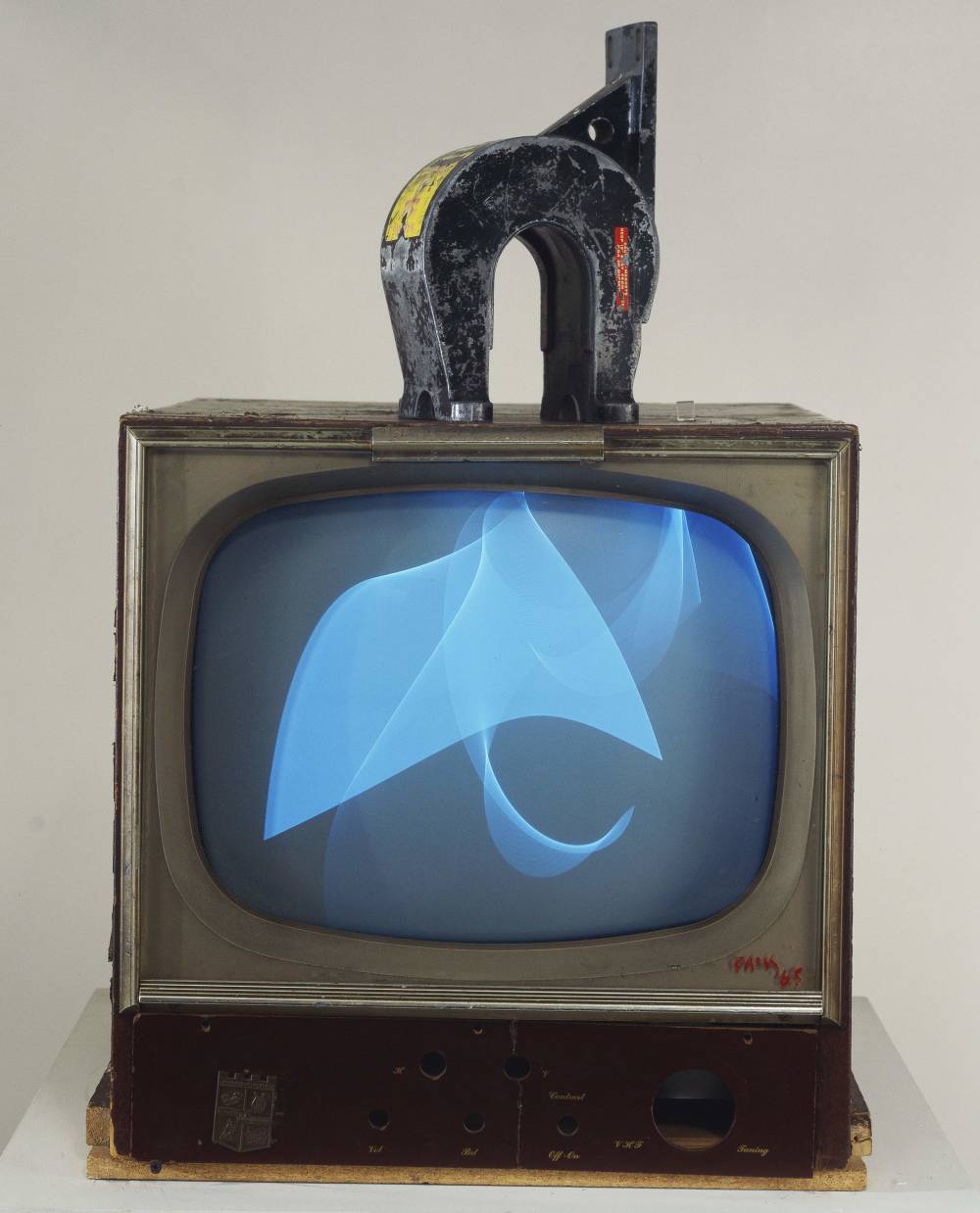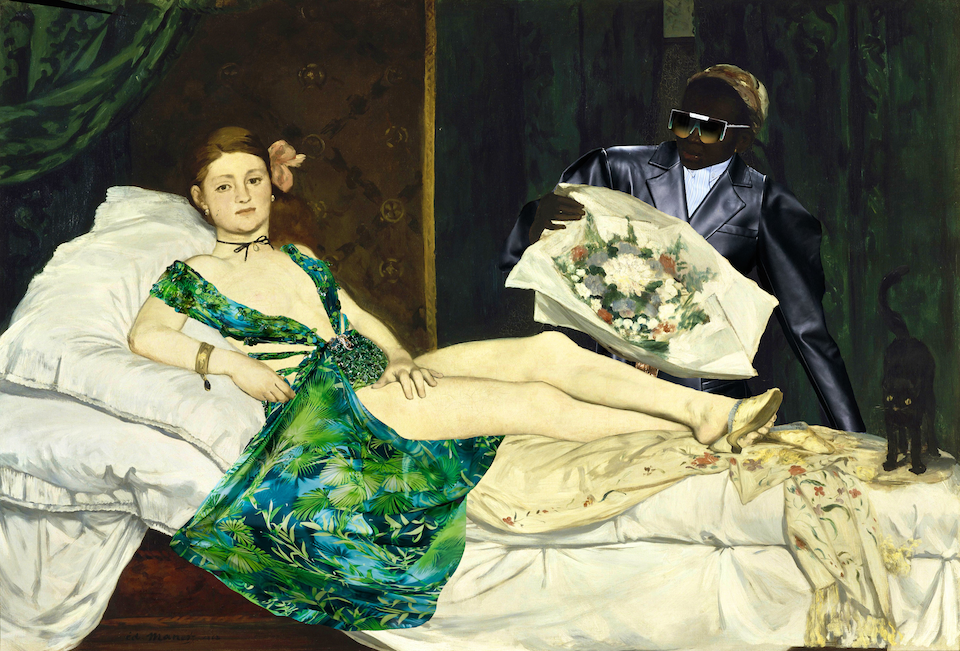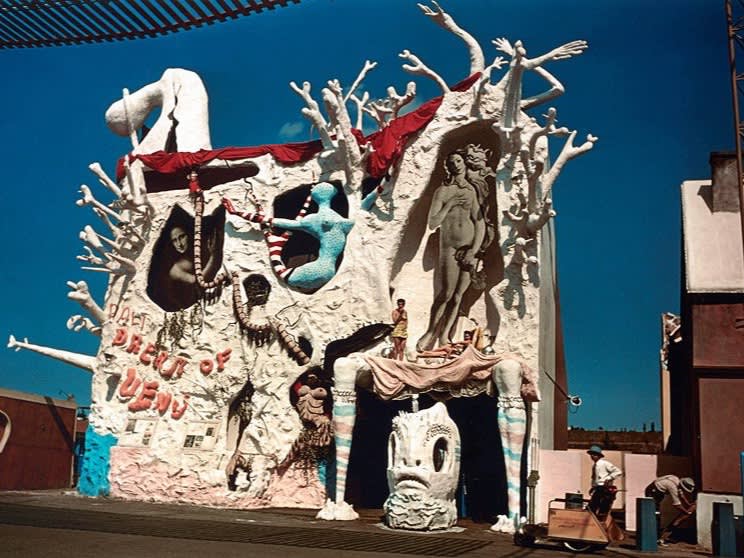Nam June Paik
at the Tate Modern
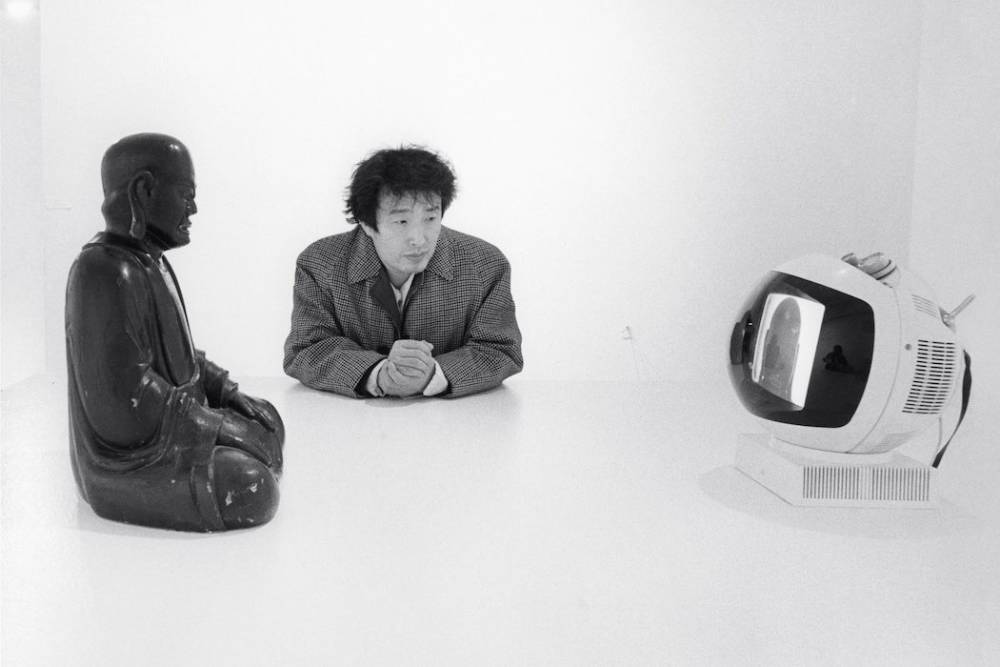
Nam June Paik and his Buddha TV
Museum of Modern Art, New York, Photograph by Eric Kroll, 1977
A pioneer in the experimental use of TV and video art, Korean American artist Nam June Paik’s innovative career encompassed a variety of media and abstract formats. His early application of telecommunications as a creative influence and medium yielded some of the most mind-bending, innovative work of the 1970s and subsequent decades.
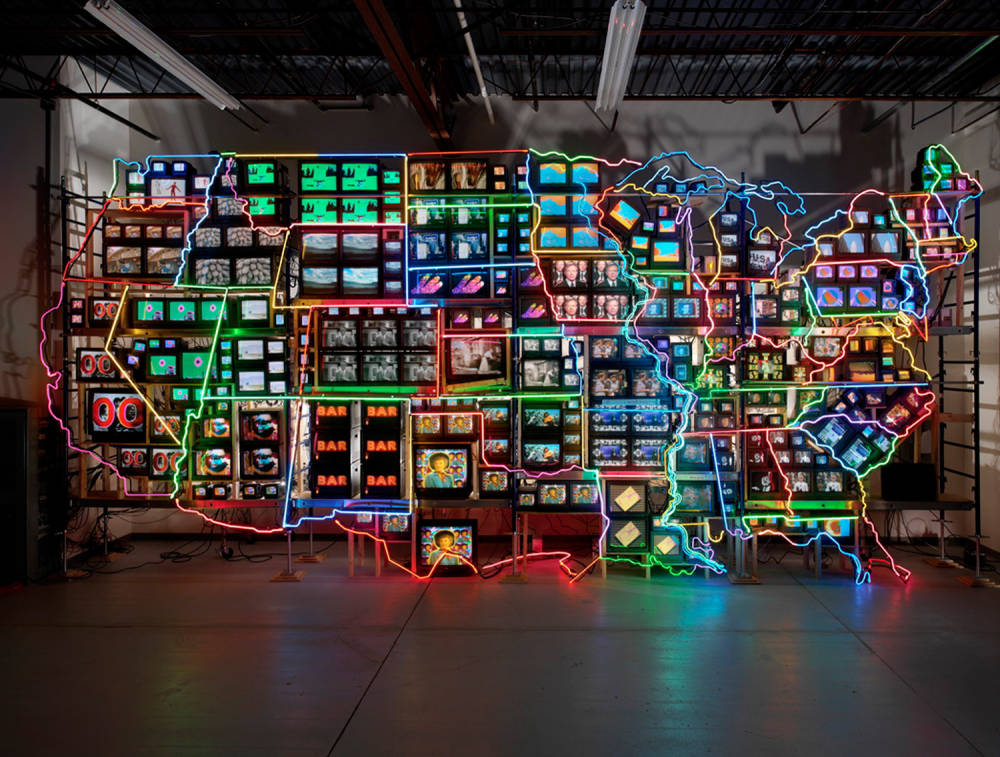
Nam June Paik
Electronic Superhighway, Continental U.S., Alaska, Hawaii, 1995
Paik’s 1995 ‘Electronic Super Highway’ – a large-scale installation addressing the electronic media used by everyday people to leave home and discover – paved the way for countless young artists since; in many respects, preempting the manner in which contemporary society lives largely digital lives today.
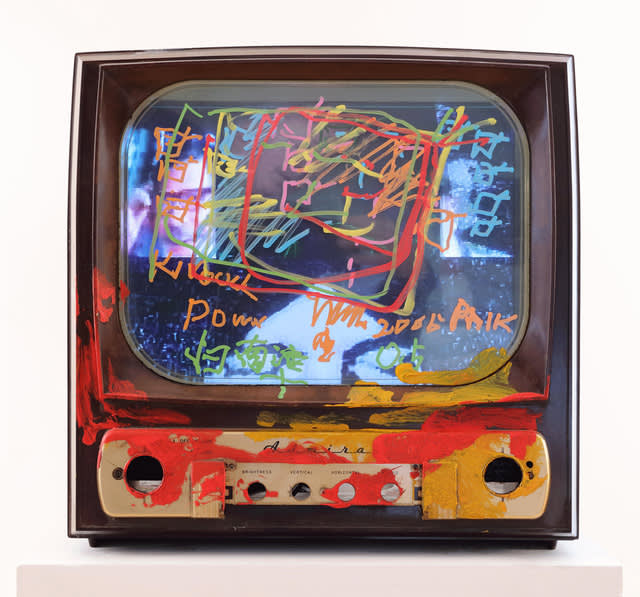
Nam June Paik
Knock Down, 2005
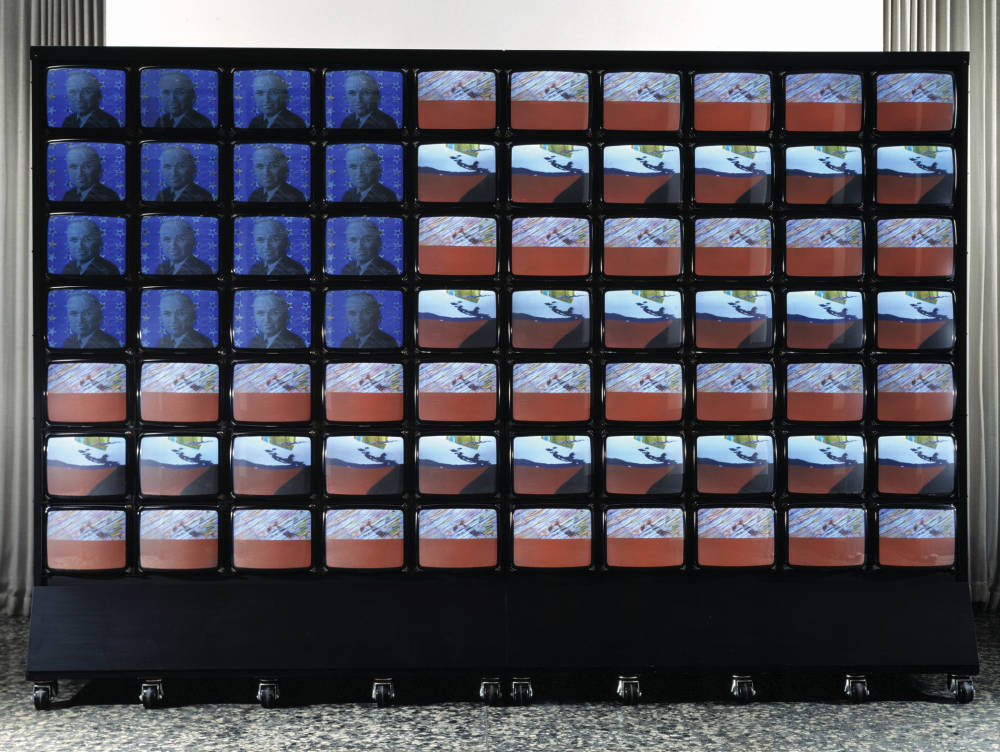
Nam June Paik
Video Flag, 1985-1996
At long last, Nam June Paik is finally getting the recognition he deserves through a major exhibition opening next month at London’s Tate Modern. Featuring over 200 works spanning the artist’s five-decade career – ranging from robots made from repurposed TV screens, to immersive, room-sized installations and innovative forms of video art – the exhibition also seeks to highlight Paik’s forward-thinking collaborations with fellow avant-garde artists, including John Cage, choreographer Merce Cunningham and Joseph Beuys. It is always an incredible experience to be reacquainted with the work of someone so ahead of his or her time, in a setting as renowned as the Tate Modern.
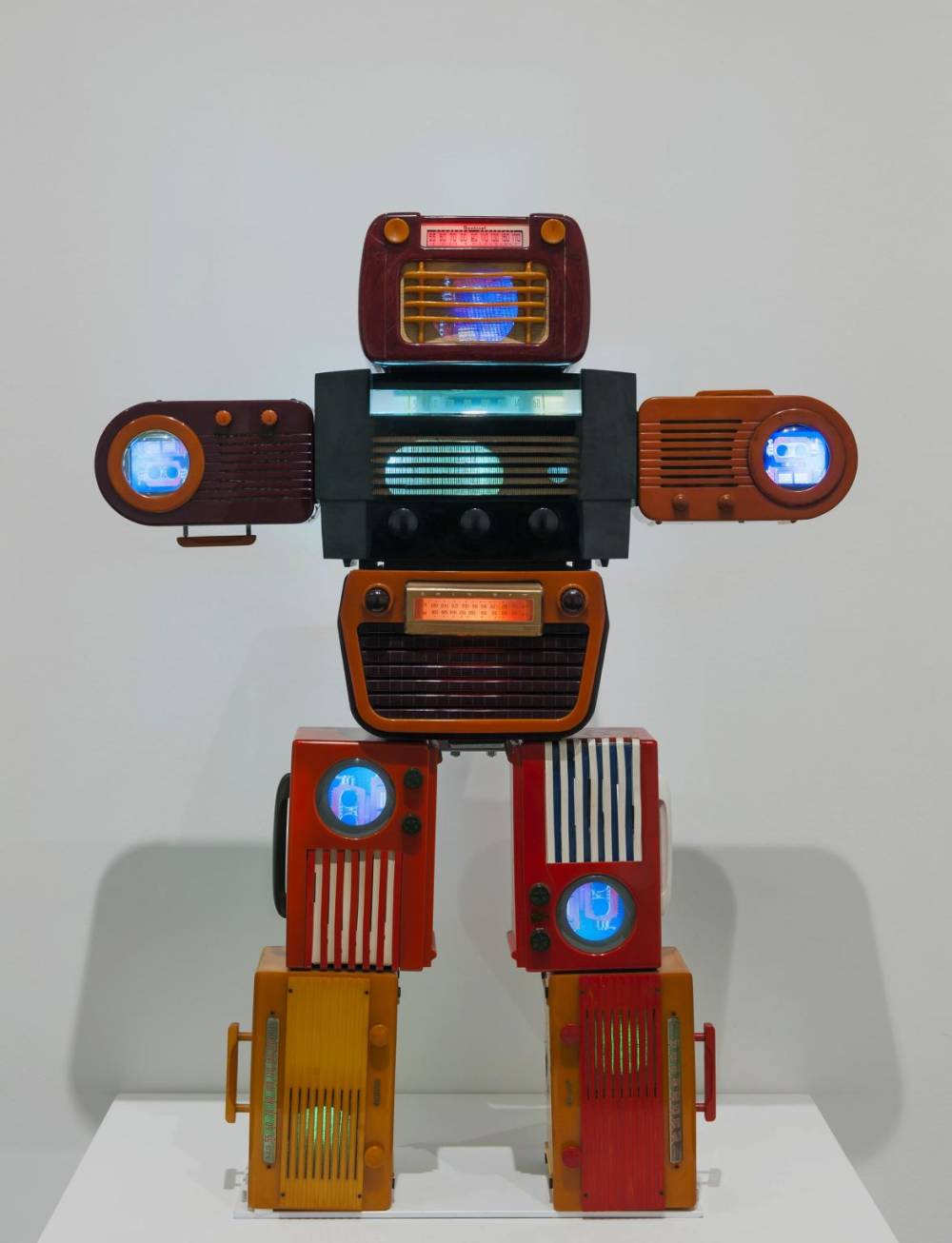
Nam June Paik
Bakelite Robot, 2002
